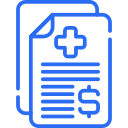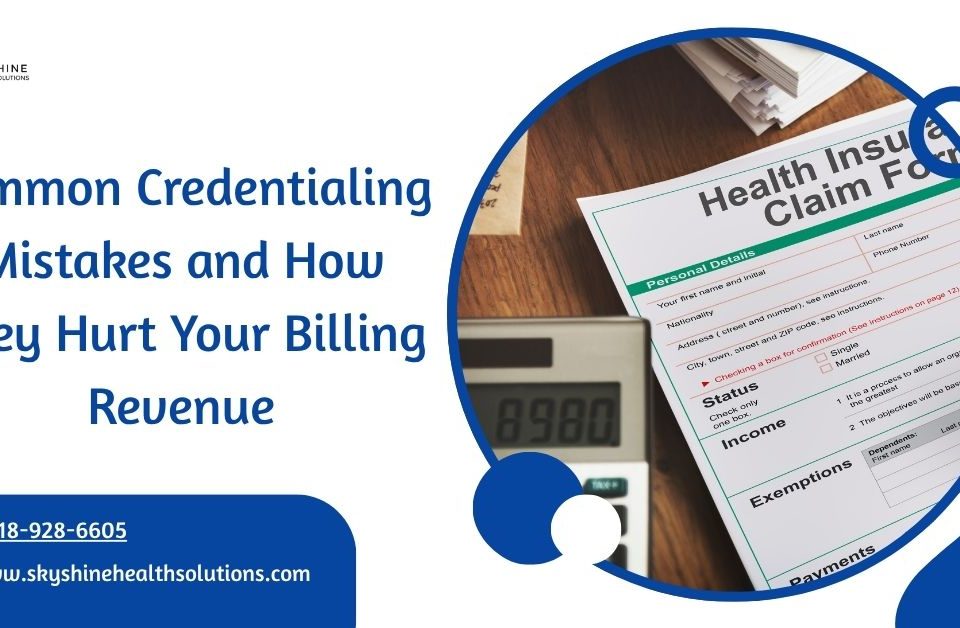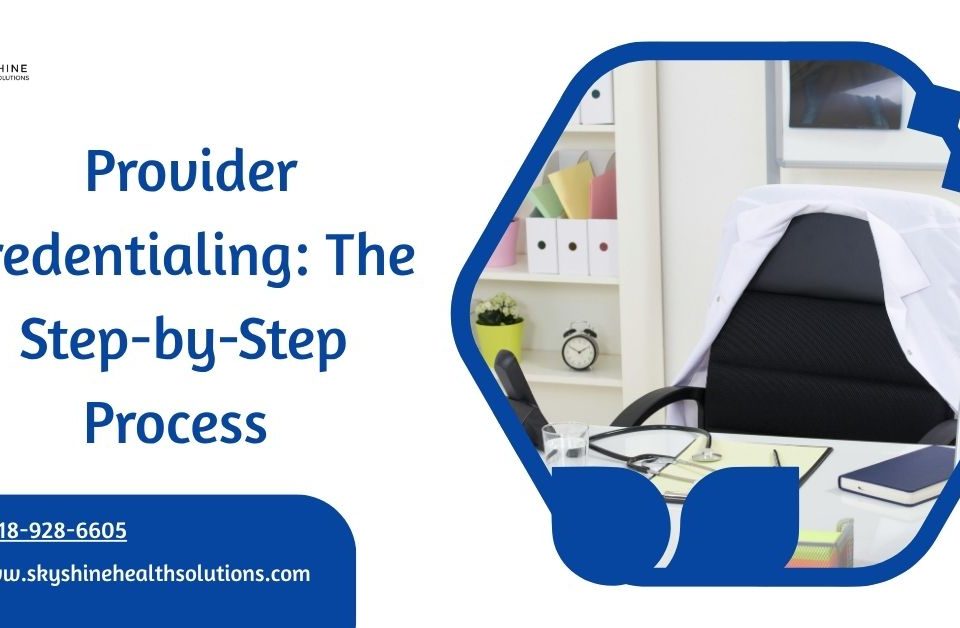
Proper Documentation in Billing
June 3, 2025
The Ultimate Guide to Provider Enrollment in Medical Billing (2025)
June 17, 2025Medical billing is a critical function for healthcare clinics, ensuring services are properly documented, coded, and reimbursed. However, medical billing mistakes can lead to delayed payments, denied claims, or legal issues. In this blog post, we’ll explore the most common medical billing mistakes clinics make and provide actionable tips to avoid them.

1. Incorrect Patient Information
One of the frequent medical billing mistakes is entering incorrect patient information, such as misspelled names, wrong insurance ID numbers, or outdated demographic details. These errors can result in claim denials or delays, as insurance companies require accurate data.
How to Avoid:
-
-
- Implement a double-checking system for patient data entry.
- Use electronic health record (EHR) systems with validation checks.
- Verify insurance information at every visit.
-
2. Coding Errors
Inaccurate coding, such as using outdated CPT (Current Procedural Terminology) or ICD-10 (International Classification of Diseases) codes, is among the top medical billing mistakes. These errors can cause claim rejections or lead to underbilling or overbilling, with financial or legal consequences.
How to Avoid:
-
-
- Train staff regularly on coding updates and guidelines.
- Use coding software with real-time updates.
- Conduct periodic audits to catch coding errors.
-
3. Failing to Verify Insurance Eligibility
Not verifying a patient’s insurance coverage before services is a common medical billing mistake. If a patient’s plan doesn’t cover a procedure or has lapsed, claims may be denied, leading to revenue loss.
How to Avoid:
-
-
- Check insurance eligibility before appointments using online portals.
- Train front-desk staff to confirm coverage during check-in.
- Automate eligibility checks through practice management systems.
-
4. Missing or Incomplete Documentation
Incomplete or missing documentation, such as lacking detailed notes about a procedure or diagnosis, is another medical billing mistake that leads to claim denials. Insurers require thorough documentation to justify medical necessity.
How to Avoid:
-
-
- Ensure providers document all relevant details in patient charts.
- Use EHR templates to standardize documentation.
- Review claims for completeness before submission.
-
5. Not Following Up on Denied Claims
Failing to follow up on denied or rejected claims is a costly medical billing mistake. Many denials stem from minor errors that can be corrected and resubmitted if addressed promptly.
How to Avoid:
-
-
- Create a system to track and manage denied claims.
- Assign staff to review and appeal denials promptly.
- Analyze denial patterns to address recurring issues.
-
6. Upcoding or Undercoding
Upcoding (billing for a more expensive service than provided) or undercoding (billing for a less expensive service) are medical billing mistakes that can trigger audits, penalties, or lost revenue. These errors often arise from misunderstanding coding guidelines.
How to Avoid:
-
-
- Ensure coders are certified and trained in ethical coding practices.
- Use auditing tools to flag potential coding issues.
- Conduct regular compliance training.
-
7. Ignoring Compliance Regulations
Failing to comply with regulations like HIPAA or payer-specific billing rules is a serious medical billing mistake that can lead to fines, audits, or reputational damage. Non-compliance often results from outdated processes or lack of training.
How to Avoid:
-
-
- Stay updated on federal and state billing regulations.
- Conduct regular compliance audits.
- Train staff on HIPAA and other regulations.
-
8. Inefficient Billing Processes
Manual or outdated billing processes contribute to medical billing mistakes, causing delays and errors. Relying on paper-based systems or failing to integrate billing with EHR systems can slow down claim submissions.
How to Avoid:
-
-
- Invest in practice management software that integrates billing and EHR systems.
- Automate tasks like claim submissions and payment posting.
- Optimize billing workflows regularly.
-
Conclusion
Avoiding these medical billing mistakes can improve a clinic’s revenue cycle, reduce claim denials, and ensure compliance. By investing in staff training, leveraging technology, and implementing robust processes, clinics can streamline billing and focus on patient care.

Visit related blog on Insurance Claims: Top Reasons They Get Denied – How to Prevent Them
Have Questions? Visit Medical Billing FAQs















